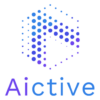Is Digital Therapy Effective for Musculoskeletal Disorders?
Musculoskeletal pain is one of the most common reasons people miss work, visit a doctor, or struggle with daily tasks. But there’s a new question employers, insurers, and patients are asking: Is digital therapy actually helping—or is it just a tech trend?
Let’s dig into the facts. Musculoskeletal disorders (MSK) like back pain, joint problems, and repetitive strain injuries are not only painful—they’re expensive. They account for $213 billion each year in the U.S., including surgeries, medications, time off work, and disability claims. Long waits and inconsistent care make recovery harder, and many patients fall into a cycle of chronic pain.
Digital therapy promises a smarter, faster, and more accessible approach. But does it deliver?
What Are Musculoskeletal Disorders (MSK)?
MSK disorders affect muscles, bones, tendons, and joints. Think of things like:
- Lower back pain
- Neck stiffness from poor posture
- Knee injuries from repetitive movements
- Shoulder tension from long hours at a desk
These issues impact over 1 in 2 adults in the U.S., and they’re the leading cause of workplace injuries and disability claims. For insurance companies, MSK care can make up to 20% of total healthcare costs.
What Is Digital Therapy?
Digital therapy uses technology to deliver care—remotely, efficiently, and often through AI-driven platforms. This could include:
- Video-based movement evaluations
- Personalized exercise routines via apps
- Ergonomic assessments of workstations
- Progress tracking and follow-ups
Many providers (like Aictive) also offer hybrid models—combining digital tools with in-person care when needed.
The goal? Treat MSK pain early, keep costs low, and give patients 24/7 support.
Is Digital Therapy Effective? Let’s Look at the Data
Here’s where digital therapy stands out: results.
Research shows that people using digital rehab programs have:
- Higher treatment adherence
- Faster symptom relief
- Fewer relapses
One study on knee pain recovery found that digital therapy reduced the need for in-person visits by 40%, while still improving pain scores and mobility.
Aictive’s own pilot data backs this up:
- 30% lower MSK treatment costs
- 20% reduction in injury-related claims
- 87–95% evaluation accuracy using AI
When patients get quick, personalized care, they’re more likely to follow through—and more likely to heal.
How AI Makes Digital Therapy Smarter
What makes digital therapy different today is AI.
At Aictive, AI tracks posture and movement using just a phone or webcam. It then creates a treatment plan based on the user’s symptoms, pain levels, and physical condition. All of this happens automatically and is available anytime, anywhere.
This removes the bottlenecks of traditional care: no long waits, no repeated trips, no generic instructions.
AI also helps detect patterns early—so pain doesn’t become a chronic issue.
Real Use Case: Workplace MSK Prevention
Let’s look at how this works in real life.
A warehouse worker or a remote employee may develop shoulder or back pain from repetitive tasks or poor posture. With digital therapy:
- They get a quick assessment through their phone
- Receive exercises tailored to their body and job demands
- Follow routines during short “active pauses” at work
- Track progress and prevent escalation
For employers and insurers, this means fewer sick days, fewer claims, and a healthier workforce.
Pros and Cons of Digital Therapy
What’s great:
- It’s always on: 24/7 access to care
- It’s cheaper: up to 80% lower costs than traditional rehab
- It’s personal: plans are customized by condition and user data
- It’s scalable: no hardware needed, just a phone
What to keep in mind:
- It doesn’t replace urgent or surgical care
- Requires basic tech use and internet connection
So, it’s not for everyone, but it fits perfectly for mild to moderate MSK issues—and for preventing serious ones.
Who Should Use It?
Digital therapy is especially effective for:
- Desk workers with poor posture or screen-related tension
- Manual laborers dealing with repetitive stress injuries
- Older adults needing guided rehab at home
- HR teams or insurers looking to reduce MSK-related costs
It’s also a smart solution for rural areas or places where healthcare access is limited.
Final Verdict
So—is digital therapy effective for MSK disorders?
Yes. Especially when it’s:
- Personalized to each user
- Driven by smart AI evaluations
- Supported by real clinical data
It’s not just an app. It’s a tool for faster care, lower costs, and better outcomes.
At Aictive, we believe in prevention and autonomy. By helping people take care of their bodies before pain escalates, we improve recovery—and avoid unnecessary costs.
Want to Prevent MSK Injuries in Your Team?
Aictive helps insurers and companies reduce MSK claims by up to 30%, with intelligent tools for prevention and remote rehab.
